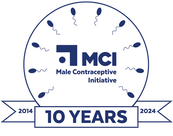Vasectomy
Vasectomy is a form of male birth control that cuts the supply of sperm to your semen, done by cutting and sealing the tubes that carry sperm. It’s a safe, simple surgical procedure that is intended to provide life-long, permanent, and very effective protection against pregnancy.
Synopsis
Through a puncture or small incision in the scrotum, the provider locates each of the 2 tubes that carries sperm to the penis (vas deferens) and cuts or blocks them by cutting and tying them closed or by applying heat or electricity (cautery). Also called male sterilization and male surgical contraception, the procedure works by closing off each vas deferens, keeping sperm out of semen. Semen is ejaculated, but it cannot cause pregnancy.
Through a puncture or small incision in the scrotum, the provider locates each of the 2 tubes that carries sperm to the penis (vas deferens) and cuts or blocks them by cutting and tying them closed or by applying heat or electricity (cautery). Also called male sterilization and male surgical contraception, the procedure works by closing off each vas deferens, keeping sperm out of semen. Semen is ejaculated, but it cannot cause pregnancy.
Key Points
- Safe, simple surgical procedure that is intended to provide life-long, permanent, and very effective protection against pregnancy.
- Has fewer side effects and complications than many methods for women.
- Reversal is not guaranteed and becomes increasingly more difficult over time. Even if the procedure is effectively reversed, fertility rates will vary significantly.
- The man or couple must use condoms or another contraceptive method for 3 months after the vasectomy before the procedure takes full effect.
- Does not affect male sexual performance or libido.
Effectiveness
99.8%+. Less than 1 in every 100 will become pregnant in the first year of use of the method. In fact, less than 2 women in every 1,000 will become pregnant. This means that 998 or 999 of 1,000 women whose partners have had vasectomy will not become pregnant.
99.8%+. Less than 1 in every 100 will become pregnant in the first year of use of the method. In fact, less than 2 women in every 1,000 will become pregnant. This means that 998 or 999 of 1,000 women whose partners have had vasectomy will not become pregnant.
Nuts & Bolts: Vasectomy
Are you interested in learning more about a vasectomy consultation?
Visitors interested in a vasectomy consultation with a healthcare provider are invited to click the button below to move forward with that process.

